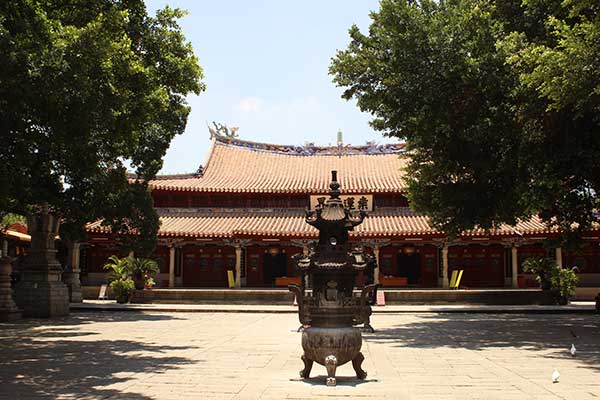Harbor of the gods
Updated: 2015-07-06 07:03
By Wang Kaihao(China Daily)
|
|||||||||||
 |
|
[Photo by Wang Kaihao/China Daily] |
Hence, while infrequent elsewhere, such mass pilgrimages remain part of daily life here.
It's a different scene at the Qingjing Mosque next door.
The holy site was first built according to Syrian construction style in 1009 and ranks among China's oldest Islamic structures. Some minarets are gone. Columns lay toppled in the yard.
While the structure is too eroded by the sands of time to still serve as a place of worship, you can imagine Zayton-era Middle Eastern fleets' crews worshiping within its walls during the port's peak.
They not only prayed to heaven but also departed from Earth in Quanzhou. The Islamic cemetery in the city's east is among China's largest.
I pass a church and a Confucian temple on my way back to downtown, where I visit the Buddhist Kaiyuan Temple. The temple, built in 686, is among the most important Buddhist sites in southern China.
Yet, while many Chinese Buddhist temples are criticized for being commercialized tourist traps, this Tang Dynasty (AD 618-907) holy site remains authentic and accessible.
Two ancient pagodas hide behind trees in the yard.
Exhibitions reveal how Buddhism prospered in the area and was exported to other countries.
As dusk approaches, I watch a Quanzhou Marionette Troupe show. As I wander the old quarter, I stumble upon a street-side teahouse performance of the local nanyin music.
I can't understand a word.
I don't need to.
The music sounds like the breeze that caresses my skin.
And I feel how tradition is not only alive today - it sings.
Related Stories
Monks practice martial art at Quanzhou Shaolin Temple 2015-05-18 09:40
China's Quanzhou 'Maritime Silk Road' exhibition opens in Brunei 2015-03-24 10:09
Quanzhou Maritime Museum, rich in ocean culture 2014-11-28 10:15
Quanzhou charms 2014-03-04 08:00
Quanzhou seek regional culture capital title 2013-08-29 11:17
Today's Top News
Power Link generates momentum with UK base
Russians will 'surprise' in victory parade: Ambassador
China-France partnership 'will benefit all'
Greece in billions of financing gap over next three years
Securities regulator fires up new policies to stem market plunge
Putin to meet Iran's Rouhani at SCO summit
The future of China's 'ghost cities'
China stocks retreat in biggest three-week plunge since 1992
Hot Topics
Lunar probe , China growth forecasts, Emission rules get tougher, China seen through 'colored lens', International board,
Editor's Picks

|

|

|

|

|

|






